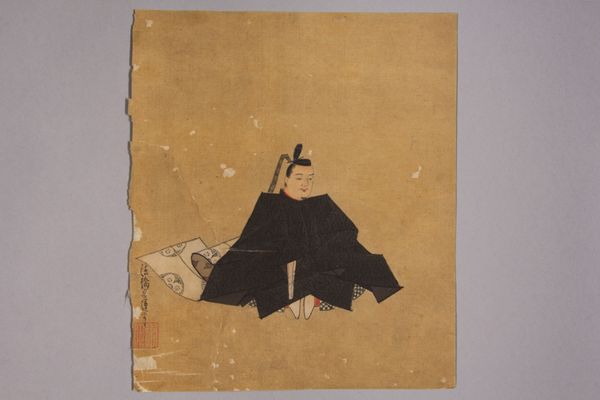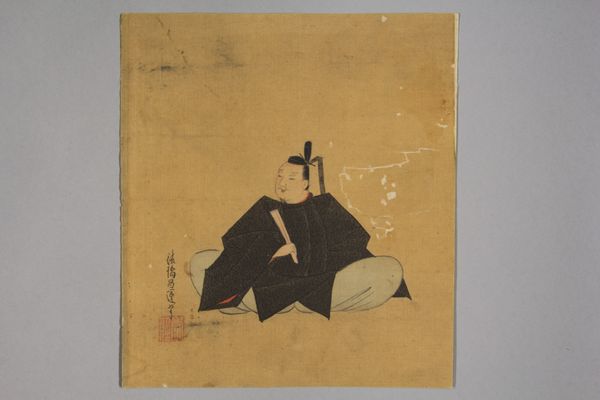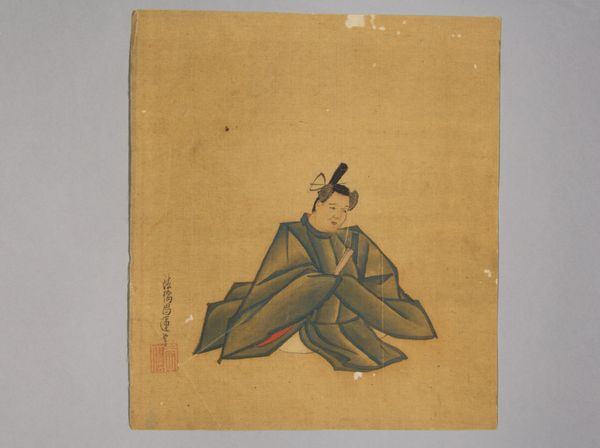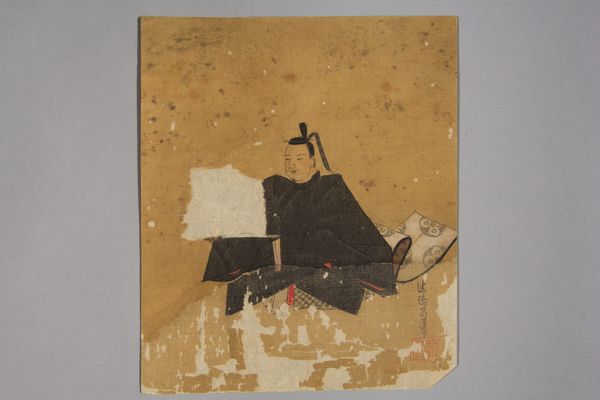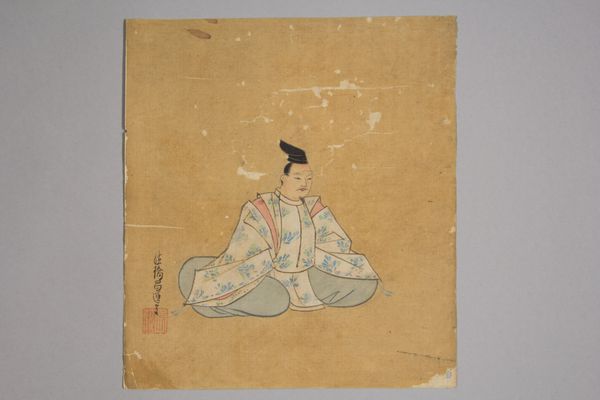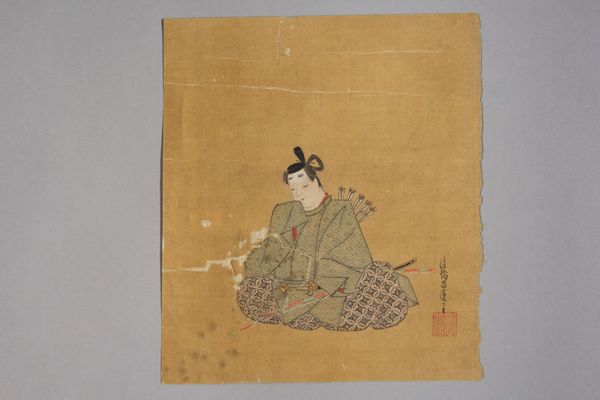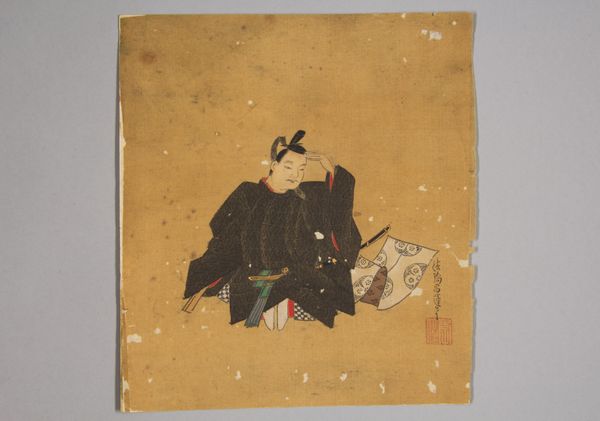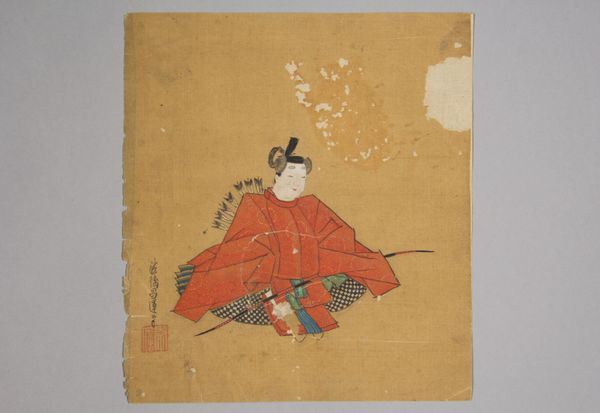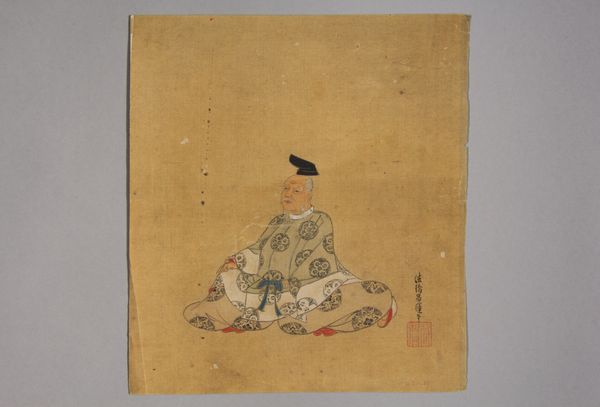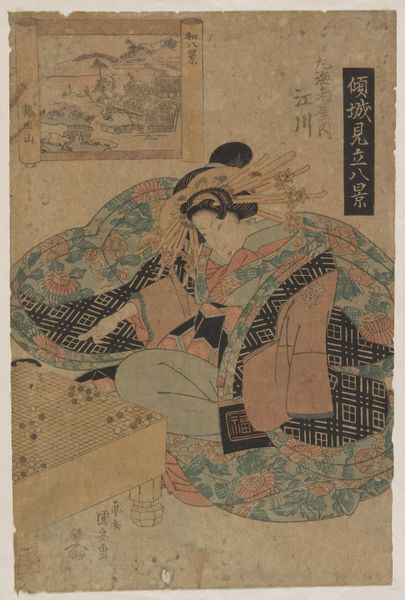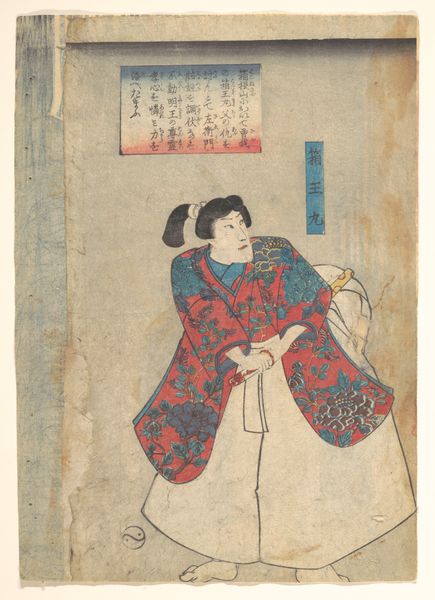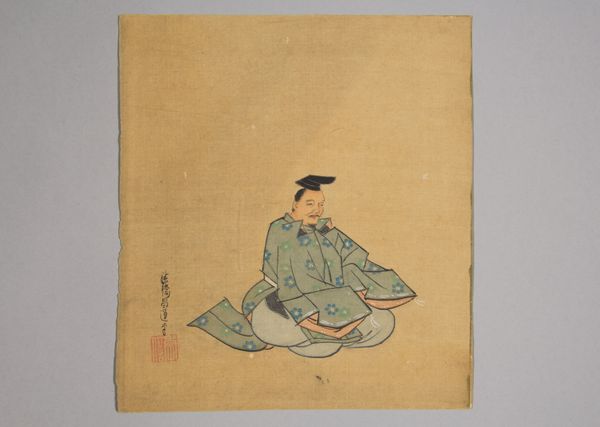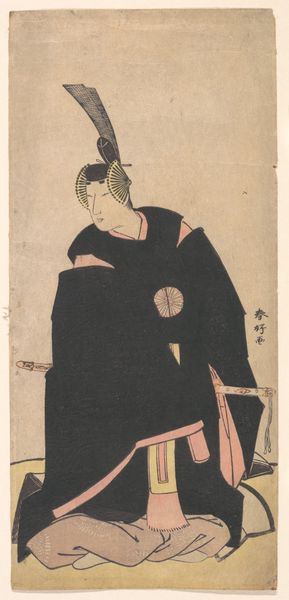
drawing, paper, watercolor, ink
#
portrait
#
drawing
#
water colours
#
asian-art
#
japan
#
paper
#
watercolor
#
ink
#
ink colored
#
men
#
japanese
#
yamato-e
Dimensions: 7 1/4 × 6 1/2 in. (18.4 × 16.5 cm)
Copyright: Public Domain
Editor: Here we have Kano Shōdun's "Immortal Poet" from the 17th century, a drawing crafted with ink and watercolor on paper. I'm immediately struck by the composition. It’s fairly minimal, yet the figure seems so self-contained, almost meditative. What catches your eye when you look at this work? Curator: The application of line is particularly interesting. Observe how Shōdun uses the ink to define the planes of the figure. The bold, almost calligraphic, strokes of the robe create a striking contrast with the relative delicacy of the face. It's in this tension between line and form that the piece achieves a remarkable sense of balance, don’t you agree? Editor: Absolutely. The contrast is definitely key. The dark robe almost flattens, pushing the figure forward, while the detail on the scroll introduces a recessive space. What’s the effect of such a stark contrast on our reading of the "Immortal Poet"? Curator: This tension serves to highlight the essence of the figure. By flattening certain planes and emphasizing others, the artist directs our focus, removing any superfluous detail that would distract from the essential qualities. Also consider the negative space surrounding the figure – it's not merely emptiness but a crucial element that allows us to fully appreciate the materiality of the artwork. Editor: So, you are saying it’s less about who the poet *is* and more about how the artist uses form and line to *evoke* a sense of poetry or immortality? Curator: Precisely. The power lies in the intrinsic qualities of the composition, the artist's manipulation of materials, and the relationships between form and space within the frame. These formal elements, I would argue, work together to capture an impression, an idea, not necessarily a concrete likeness. Editor: That's a different approach than I usually take, thinking about historical context and all that. I see now that really looking closely at the art itself opens up another way of reading it. Curator: Indeed. A keen visual analysis always bears fruit.
Comments
No comments
Be the first to comment and join the conversation on the ultimate creative platform.
